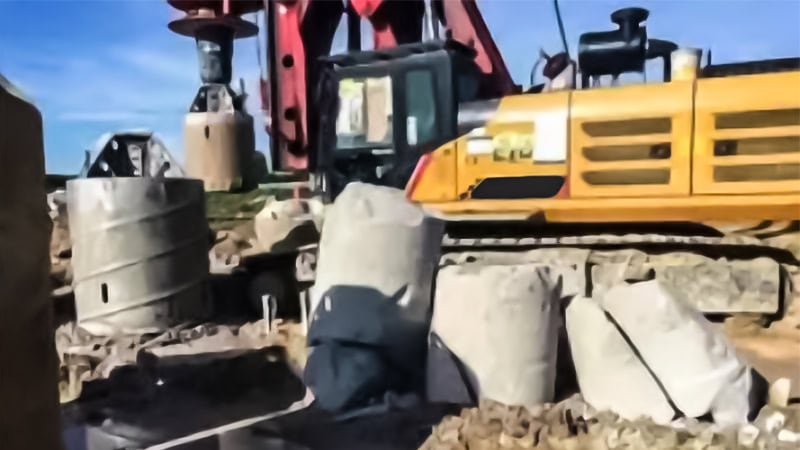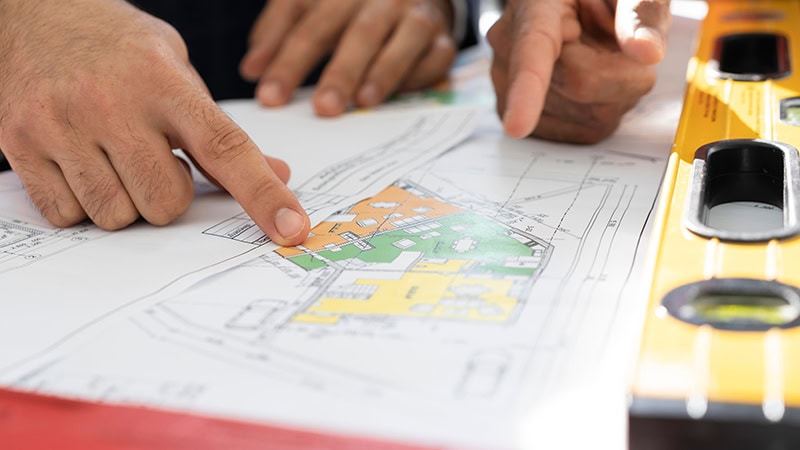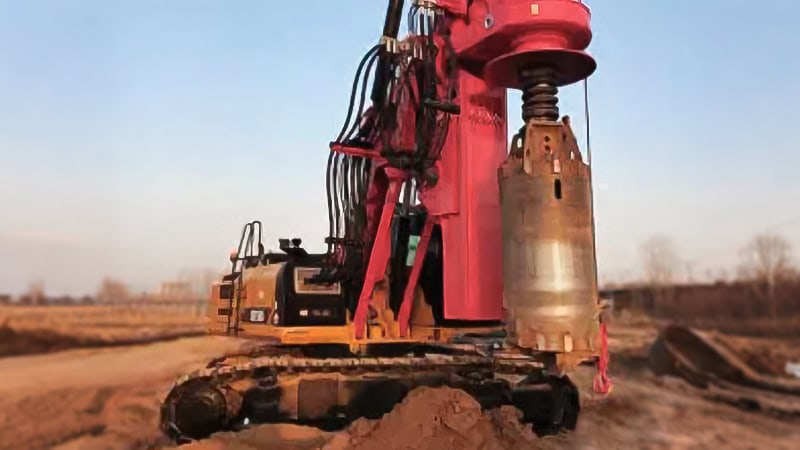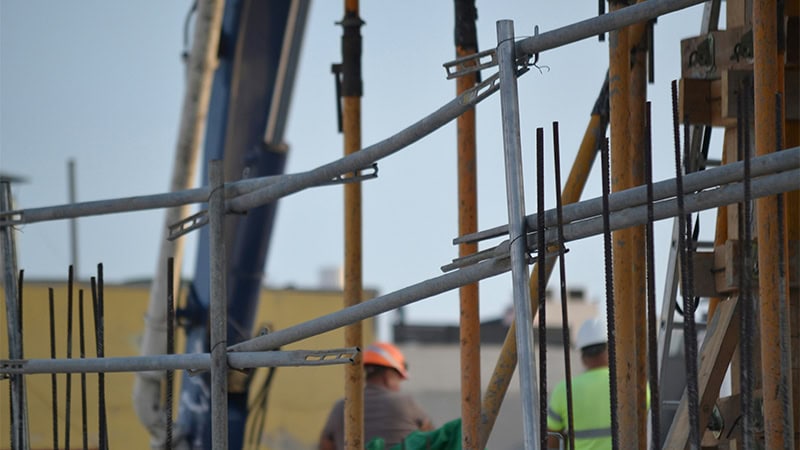
Key Takeaways
- Selecting the right tools improves drilling speed, accuracy, and overall productivity.
- Optimized drilling helps reduce energy use, oil, project delays, and company costs.
- Regular maintenance, data, and real-time adjustments support consistent output.
- Labor-saving tools and modular configurations help crews work faster with less strain analysis.
Maintaining a consistent drilling speed and efficiency is crucial to stay on schedule, reduce costs, and prevent delays. Operators often encounter challenges like changing soil conditions or energy loss that can slow down the drilling process.
Tool selection is essential—it influences everything from labor requirements to motor power consumption and overall performance. In small and medium-scale projects, using the wrong drill bit can lower productivity, cause delays, and wear down equipment more quickly.
Understanding data on soil type, hole depth, oil presence—including deeper layers like those found in the Bakken formation—and rig compatibility helps teams make better decisions during the drilling process.
These factors are more significant in compact jobs where tight margins and restricted access can limit the setup and speed of drilling operations. As a provider of smart solutions for mid-scale and compact jobs, Everstar Machinery offers rotary drilling rig accessories designed to improve results on smaller fields.
This article shares project strategies, operator tips, and maintenance habits to greatly enhance drilling execution over the coming years.
Why Drilling Efficiency Matters in Construction Projects

In small and mid-scale environments with limited resources, drilling analysis is essential for staying on budget and on schedule. Every day of operation matters, and even minor setbacks can lead to expensive delays or unplanned rework.
Efficient drilling impacts three main areas: cost, scheduling, and labor.
First, it helps manage fuel, oil, and energy use, lowering the need for overtime or excessive machine operation. Second, it helps keep project timelines on schedule by reducing idle rig time and delays between hole completions. Finally, it eases workload on crews by making tasks more efficient and reducing manual work.
When it comes to productivity, data shows that bottlenecks in the drilling phase can delay follow-up activities like reinforcing or pouring foundations. These delays add pressure on teams and increase the risk of equipment stress, unexpected breakdowns, or overruns.
Cost Savings Through Faster Execution
Faster drilling execution reduces average labor hours, fuel use, and daily operating costs. Completing each hole or well with fewer passes and optimized rig settings lowers costs while managing the workload more efficiently, thereby enhancing jobsite flow.
Avoiding equipment overuse and unnecessary maintenance delays is crucial. In small-scale jobs where crews depend on limited equipment, maintaining drilling tools and rigs in proper condition reduces repair costs and avoids critical downtime.
Choosing the Right Tools to Greatly Enhance Drilling Speed
Drilling success heavily relies on choosing tools that are optimized for speed, precision, and compatibility with the rotary drilling rig.
Tool features such as cutting angles, steel grade, and tooth profile directly influence how quickly a hole can be drilled without stressing equipment or causing downtime.
Modular augers and quick-change core barrels, for example, reduce the time needed to reposition in foundation work. In compact areas, these estimates provide a steady output while making handling and setup easier.
Everstar Machinery offers drilling tools developed for small and mid-scale rigs, including short-flight augers and lightweight buckets that match the torque and deeper drilling requirements of compact machines.
These options are designed for high-volume installation and repeated use across various soil types, increasing speed while preserving drilling control.
Matching Tools to Soil and Project Scale
Small- to mid-scale well drilling often requires quick adaptation to changing soil conditions while working within tighter site constraints. Choosing the right tool based on project scale and infrastructure prevents overworking the equipment and helps maintain consistent speed.
For example, in clay, flat or spade-style cutters reduce clogging, while drill bits with bullet teeth are ideal for rocky ground. Mixed soil layers often require a hybrid approach to maintain optimized drilling without sacrificing control or depth accuracy.
Selecting Drill Bits for Speed
Choosing the right drill bit enhances cutting speed, protects the rig, and keeps drilling operations on schedule. It must match both the soil type and rig power to minimize delays and equipment wear.
High-quality bits engineered for durability and precision help crews stay productive, reduce maintenance needs, and produce faster, cleaner results.
Performance Optimization Strategies On-Site for Efficient Drilling

Environmental conditions such as moisture, soil compactness, and limited site access can affect drilling speed and output quality. To keep productivity high, company operators need solid planning and precise techniques that cut energy waste and reduce equipment strain.
Daily pre-drilling data and assessments are crucial for identifying potential delays or wear risks. Adjusting for weather, material hardness, or shifting field conditions can prevent slowdowns and lead to improved performance.
Operators should also report data on hole quality during the job to detect early signs of deviation or excessive wear, optimizing resources and reducing waste. Maintaining consistent downward pressure, monitoring depth, and ensuring proper tool rotation are important habits.
Integrating Checklists and Real-Time Adjustments
On-site productivity increases when teams utilize structured checklists that cover daily analysis of tool conditions, lubrication, motor temperature, and soil verification. These small steps help prevent issues before they halt progress.
Real-time adjustments—such as changing drill bit type mid-task or altering speed settings based on feedback—keep drilling operations on track. Responsive crews who adapt to shifting conditions can maintain consistent output even under unpredictable field conditions.
Energy Information Administration Insights
To understand how energy use impacts operational costs and output, project managers can reference the U.S. Energy Information Administration (EIA). Their reports and data on industrial energy use offer valuable insights into estimating power consumption in drilling operations.
Labor-Saving Tools and Equipment Features
This topic has a direct impact on the drilling process by optimizing resources, reducing crew workload, and speeding up routine operations.
Key examples include modular, quick-change drill bits, lightweight buckets, and self-cleaning augers. These feature figures reduce tool swap duration and make repositioning easier without increasing physical strain.
Compact rigs with integrated handling systems also promote labor savings—especially on repetitive tasks like drilling in straight lines or tight clusters.
While not fully automated, mechanical support in tool alignment or locking mechanisms helps keep a steady work pace without needing complex electronic controls.
Case Scenarios from Small-Scale Worksites
In projects where many shallow holes or wells need to be drilled in confined spaces, using modular augers with quick-connect couplings greatly reduces setup time. Crews can change tools in minutes, decreasing downtime and keeping a steady drilling pace across the area day after day.
For repetitive foundation work, such as fence lines or solar panel installations, lightweight drill bits combined with compact rigs reduce physical strain on the crew.
This setup enables company operators to move equipment without requiring additional lifting support, thereby minimizing fatigue and increasing daily activities’ output.
In utility installations that require precise placement near existing infrastructure and underground wire lines, short-flight augers combined with handling attachments have proven effective.
The combination enhances operational average while minimizing over-digging and unnecessary repositioning, maintaining clean and controlled operations as expected.
Maintaining Total Efficiency Over Time

Maintaining drilling effectiveness across different job phases requires regular inspections and monitoring of tool wear. Operators should observe the condition of cutting teeth, replace damaged parts, and regularly check alignment to prevent a decline in results by the end of each phase.
Knowing when to rotate or replace drill bits helps prevent unexpected downtime and keeps the rig operating at full capacity. Ignoring wear can cause problems, such as excessive stress on machines, reduced productivity, and compromised hole quality.
Stocking backup tools is another important way to stay prepared. Having essential information and spares on-site helps prevent emergency downtime when unexpected damage occurs, enabling teams to stay on schedule without relying on last-minute deliveries.
Everstar Machinery’s Support for Ongoing Performance
For years, Everstar Machinery provides continued service beyond initial equipment selection, offering technical advice, compatibility guidance, and accessory kits presenting solutions built for specific demands. This support ensures operators have the right tools and knowledge for their projects.
Companies can also request after-sales support for training and setup, helping ensure tools are used correctly and maintained to meet long-term effectiveness goals. By working with Everstar, operators gain reliable assistance that reduces errors and maintains consistent drilling work over the long term.
FAQs – Drilling Efficiency
How do you calculate drilling efficiency?
It is calculated by comparing the average drilling speed and penetration rate to the theoretical maximum under ideal conditions. It factors in duration spent on non-drilling activities like tool changes, data analysis, and downtime to measure overall output data in the project area.
What factors most affect drilling speed on small construction project areas?
Key factors include soil type, tool construction, rig power, and environmental conditions such as moisture and area access. Operator skill and maintenance schedules also impact how quickly and smoothly drilling progresses on small-scale projects.
How do I know if I’m using the wrong drilling tool for a project?
Signs of the wrong drilling tool include slow penetration, frequent wear, and several other problems, such as excessive vibration. Matching the tool’s cutting angles and materials to soil type and rig specifications is crucial for optimal output.
Can regular tool maintenance improve productivity?
Yes, regular tool maintenance through consistent inspections and timely replacements helps reduce breakdowns and minimize downtime. This practice ensures smoother operations, extends tool life, and supports sustained drilling speed and overall effectiveness.
What’s the difference between performance and speed in drilling?
Speed refers to how fast the drill penetrates the soil, while performance encompasses speed plus factors like accuracy, wear resistance, and energy use. High output means efficient drilling that balances quick progress with long-lasting equipment.
How do Everstar tools compare in terms of efficiency?
Everstar’s drilling tools are built for durability, precision, and compatibility with small and mid-scale rigs. Their modular and lightweight designs support faster setups, reducing downtime and improving overall drilling effectiveness on the field.
Conclusion: Improving Drilling Speed and Efficiency
To recap this topic, successful drilling is a critical factor in controlling project costs, adhering to timelines, and maximizing total productivity in the project area. Achieving this requires a strong synergy among choosing the right tools, keeping operator expertise sharp, and thorough site coordination.
Smart tool choice not only reduces wear and downtime but also helps maintain consistent drilling speed and accuracy. Meanwhile, operator awareness ensures tools are used effectively, and well-organized planning adapts workflows to site conditions, avoiding delays and bottlenecks.
Everstar Machinery is a leading provider of reliable, purpose-built equipment engineered specifically for small to mid-scale projects. With our tools, information, and expert guidance, companies can become more efficient by increasing drilling output, reducing maintenance needs, and ensuring smoother project completion.
Ready to Start Smarter Drilling?
Request a consultation with Everstar Machinery to choose the right tools for your drilling needs and get expert advice on improving productivity with your current rig.
Contact us for personalized support.